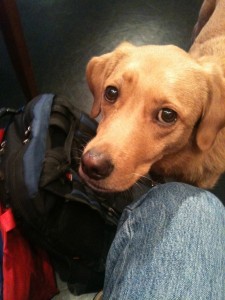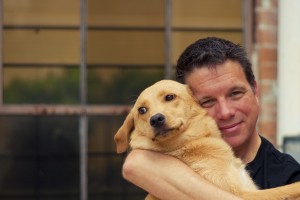Truth is a slippery thing, subject to so much bias and spin. We know this, all of us, all too well. And, those of us who work in the community of dogs and their people know it particularly well.
We dog people are an emotional lot, and emotion is so often what clouds truth. We take on beliefs about our dogs and shore up those beliefs with what we see on TV or read on the Internet. It’s called confirmation bias; we hold true to an opinion and that belief is strengthened every time we hear it repeated elsewhere. A natural human process called cognitive dissonance blocks contradictory ideas; information that doesn’t support our beliefs is disruptive to our mental processes and set aside as false. We are, it seems, not a reliable filter for truth.
In the world of dog training there is a great deal of bias and dissonance. Some believe quite strongly that dogs learn from a social structure similar to that of wolves. The idea is that wolves and dogs both form linear pack hierarchies lead by alpha males and females. Humans teach dogs by showing their social dominance and become leader of the pack. It’s the basis for Cesar Milan’s approach, and that of many other trainers.
Still other trainers believe with equal vigor that dogs learn based on clearly communicated criteria and consequences. The idea is that dogs learn the same way all other animals learn, based on whether or not any given action is reinforced or punished. This is called Behaviorism. It’s rooted in the early 20th century work of John Watson and B.F. Skinner.
 Add to that other ideas. Many feel quite strongly that they can communicate intuitively with dogs both living and dead. Closely related is the idea that dogs have a sixth sense that allows them to know and understand us at a very deep, even unconscious level. This belief suggests dogs learn in a much more humanlike way, that they already understand what we mean and intend. For some, dogs even become mystical creatures, romanticized as much as they are beloved.
Add to that other ideas. Many feel quite strongly that they can communicate intuitively with dogs both living and dead. Closely related is the idea that dogs have a sixth sense that allows them to know and understand us at a very deep, even unconscious level. This belief suggests dogs learn in a much more humanlike way, that they already understand what we mean and intend. For some, dogs even become mystical creatures, romanticized as much as they are beloved.
What’s the truth? It’s a slippery thing, especially when it mixes with strongly held emotional beliefs. The closest thing we have now to truth is the vigorous work of science. Contrary to what many believe, science is not a list of answers but a constant questioning. It is the search for truth, proposing possibilities and testing them against reality. An idea is tested, measured, and then presented for scrutiny. Others then test the idea as well, measure, and present. Ideas that test and measure what they clearly intend to are considered valid. Those that are tested many times by others with identical results are considered reliable. Validity and reliability are the hallmarks of good science.
When it comes to how dogs learn, I lean deeply into science. Some questions have been asked for nearly a century with valid and reliable answers. Dogs (all animals) do learn based consequences. Presented with a given situation, dogs will behave (act) in a way that reflects the consequences of that behavior in the past. Dogs who get treats when the come when called tend to come when called more often. We’ve taught dogs in this way, perhaps for hundreds of years.
Newer studies within the past decade indicated that dogs do not form packs with alpha males and females. In fact, we are gaining new understanding that suggests wild wolves don’t either, at least not in the way we once thought. Wolf packs are more like a family with a father and mother; the rest of the pack is made up of their offspring who remain with them for a year or more. The idea that dogs are trying to ascend to leadership of our human families has never been shown to be true. These early studies are promising in terms of their validity. More research will be needed to bear out their reliability.
The idea of animal communication is intriguing. It speaks to our attraction to things mystical and unknown. Mystery and questioning were the very things from which science was born. Still, there has been little research in this area. That said, there is early evidence that dogs can read our facial expressions and body language expertly, better even than chimpanzees can. That can look very much like evidence of a sixth sense to us, but is it more likely the very deft use of the dog’s existing five senses.
What then is the truth? How does it settle with our beliefs? To what can we grasp firmly when so much seems all too slippery? My answer follows the vigorous work of questioning. Lean into the science. It’s where faith finds firm rooting. Science is the universal codex of great things divine.
And what better way to explore the divine than through our dogs.

